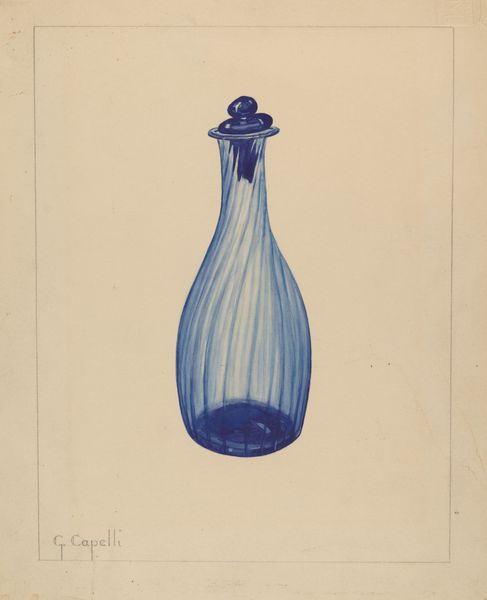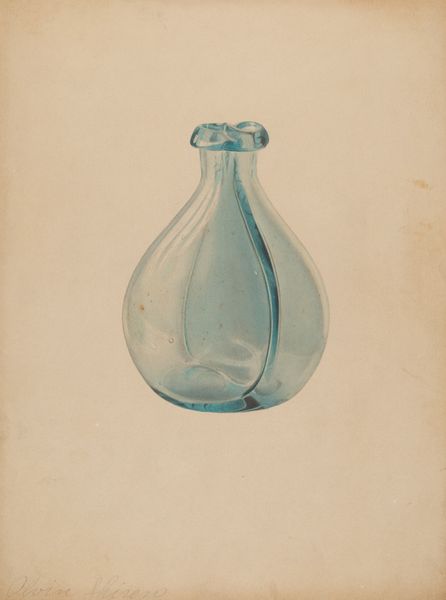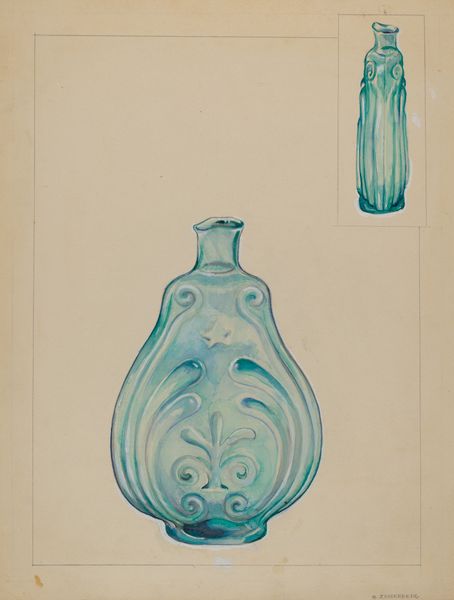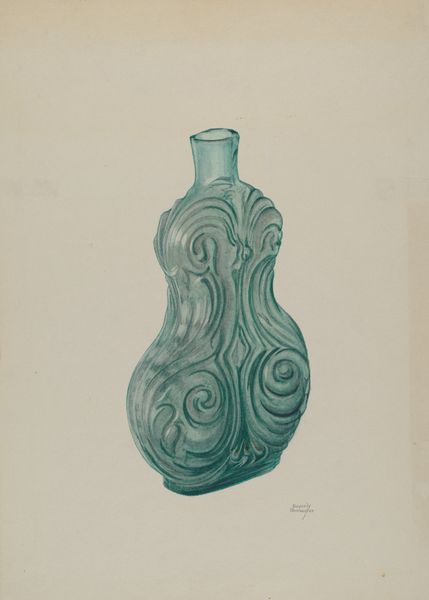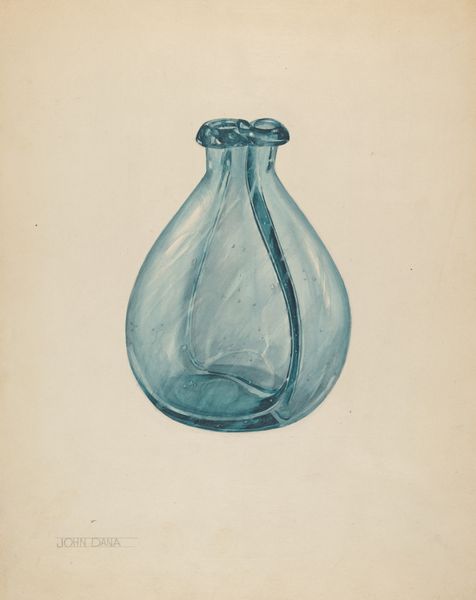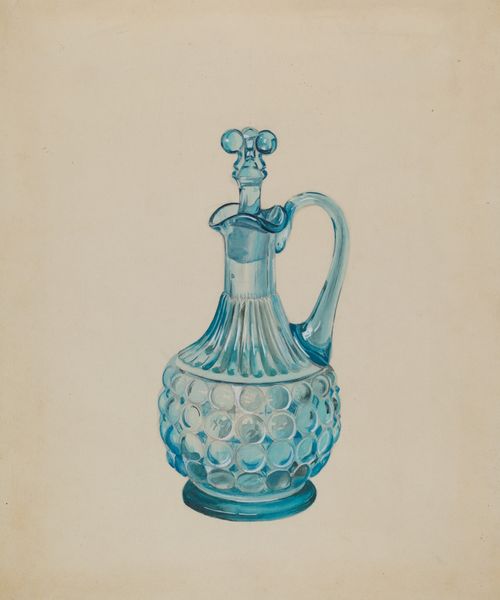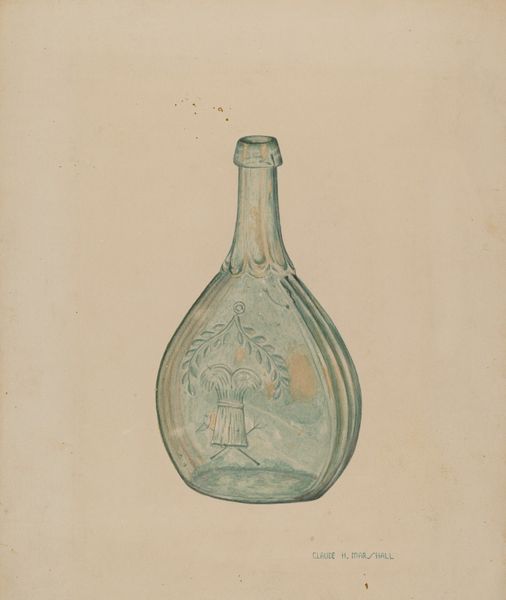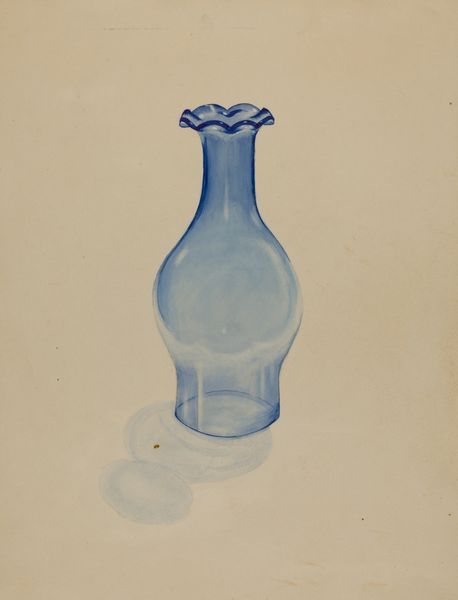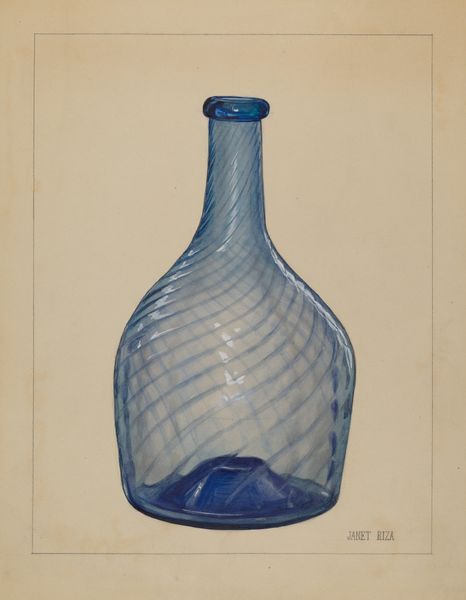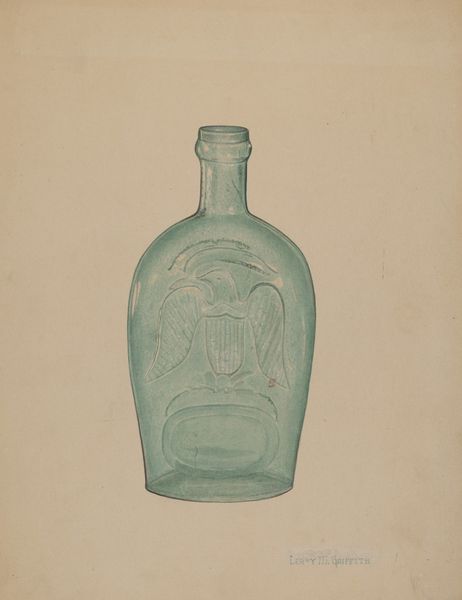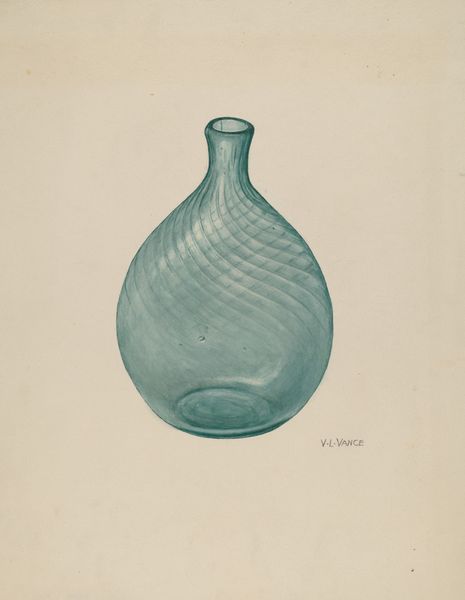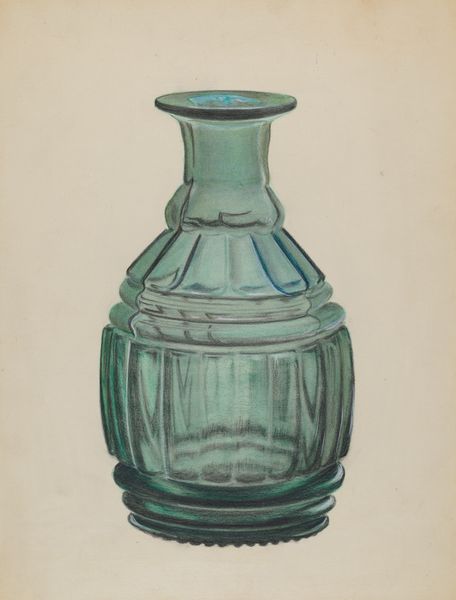
drawing, watercolor
#
drawing
#
watercolor
#
watercolour illustration
#
watercolor
#
realism
Dimensions: overall: 35.6 x 29 cm (14 x 11 7/16 in.)
Copyright: National Gallery of Art: CC0 1.0
Curator: Looking at "Flask," a watercolor drawing created between 1935 and 1942 by Carl Buergerniss, the delicate blue hue gives it such a tranquil air, doesn’t it? Editor: It does. The almost ethereal quality of the flask makes me think about fragility, both in the object itself, of course, but also perhaps more metaphorically, reflecting the anxieties of that period, perched between economic depression and global conflict. Curator: Exactly, and that vulnerability ties into the work's engagement with broader discourses around the home and domesticity. Flasks often contained remedies, perfumes...objects associated with feminine spaces and perhaps coded ideas about wellness, self-care, and even concealment. Editor: Right, and the spirals adorning the flask seem significant. Given the likely function, do these ornaments echo patterns used in packaging design, like on pharmaceutical or cosmetic containers? Was this, then, a kind of folk attempt to prettify potentially stigmatized yet necessary contents? The social life of such utilitarian forms always fascinates me. Curator: It's tempting to read these as purely decorative. But what if they carry other, perhaps localized or cultural meanings we aren't fully privy to? Are there pre-existing decorative traditions within which these motifs operate? Editor: Those are vital questions to ask. I think we have to situate such a rendering, the physical making of it, firmly within socio-historical trends. And while the spiral detail suggests potential industrial associations in the early 20th-century market, the watercolour method chosen lends itself to softness. It isn't hyperreal. This medium provides such interesting material tensions. Curator: True. And that tension can mirror the wider social tensions inherent in the period of its creation. Maybe through something as apparently straightforward as a depiction of a flask, we encounter anxieties concerning class, health, gender roles, etc. Editor: Yes! We should remember not only how these art materials work technically to depict an image of material culture but, perhaps, to show how everyday people coped when the foundations of social and political worlds wobbled. The making, then, can offer its own insights!
Comments
No comments
Be the first to comment and join the conversation on the ultimate creative platform.
